Interpretations of the tomb of Imam Hussain, the grandson of Prophet Muhammad, tazia (also ta’zia, taziya, tabt or taboot) is a shrine constructed to be a part of the procession on the day of Ashura. The day of Ashura is the tenth day in the month of Muharram when Imam Hussain is believed to have died in battle at Karbala in 680 CE, and is considered to be a significant narrative on martyrdom and sacrifice for Shia Muslims. It is believed that tazia arrived in India in the fourteenth century because of the Mongol ruler, Taimur, who paraded a replica of Hussain’s Karbala tomb around his military camp as a way of mourning. Some accounts also suggest that the popularity of the practice of tazias was brought about by the Mughals, who encouraged it as a way for members of the royal family, who weren’t able to visit the shrines in person, to see the shrine.
Tazias form a part of the mourning ritual called azadari that takes place during the month of Muharram. The tazias are brought to be a part of both temporary individual azakhanas (a place for mourning during Muharram) as well as permanent structures within imambaras. The ritual of bringing tazia home followed by its dismantling is called taziyadari, though that is a term more popularly used within the Sunni tradition. Palm-sized tazias, known as mannati (prayer) tazia, made of cigarette boxes and coloured paper, are brought in along with a larger taziya and zarih – an elevated structure that surrounds a grave – for prayers during Muharram. The key differences between the two are that the zarih is a structure with a square base and round domes – unlike the tazia’s rectangular base and conical domes – and is a permanent structure within the imambara.
The tazias are commonly made of bamboo, coloured paper, transparent paper, papier mache and tinsel. The finished structures can vary in size from being several feet in height to palm-sized, but in most cases these are temporary and are created anew every year. Irrespective of its scale, the main components of the tazia include a takhat, or a rectangular base on which the structure is built; the dar or the main structure consisting of storeys and arches; the chhatri, or the canopy; and finally jhallar, or trimmings. At times the designs are often inspired by the aari-zardozi, a form of chain-stitching in Lucknow. While the popular colours used in tazias are red, associated with Imam Hussain, and green, associated with Imam Hasan, there is a vast variation in how these structures are designed in different parts of the country. Some variations include a jau ka tazia, made from barley (jau) and wood in Lucknow or a tazia made of mustard seeds near Jaipur. Some variations also include structural innovations, such as the use of the pattha (dorsal vein of a buffalo) as a sturdier alternative to thread to hold the bamboo together.




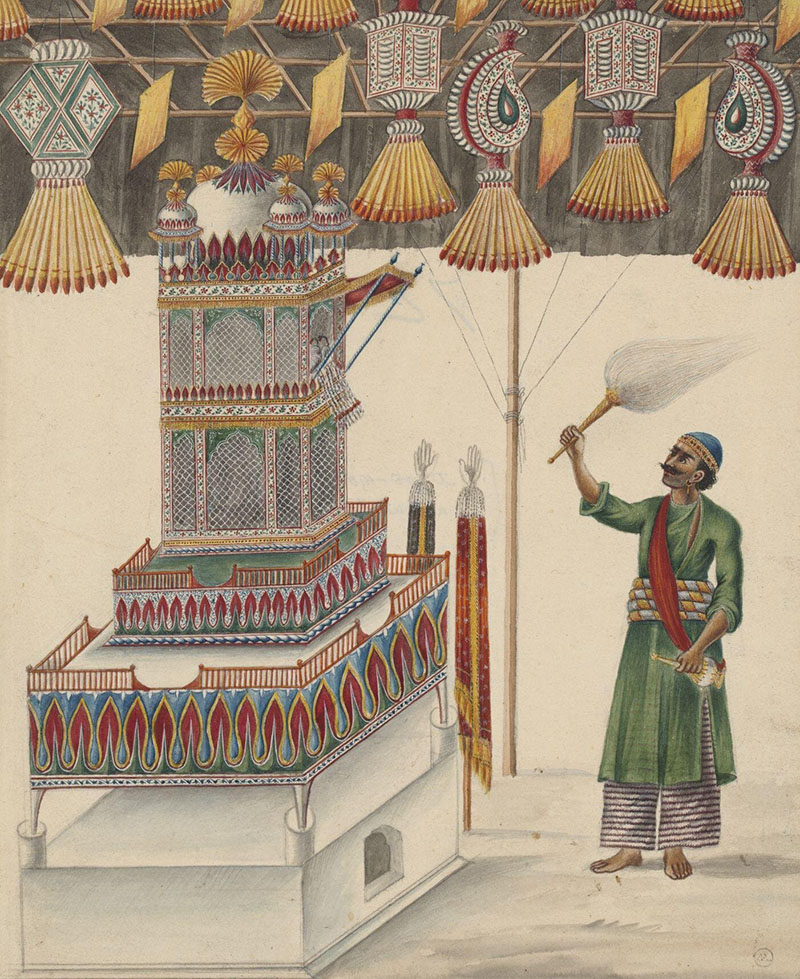
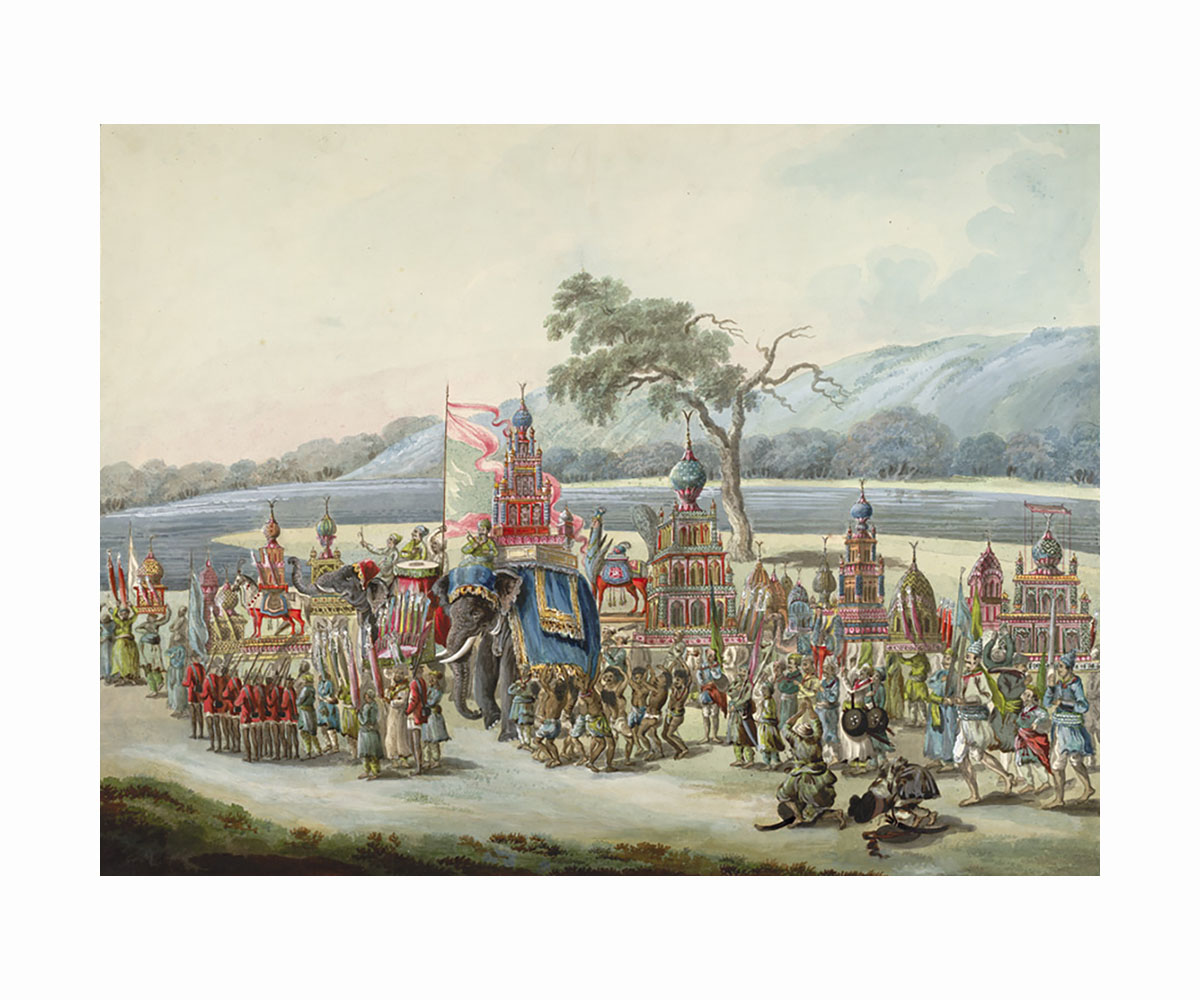
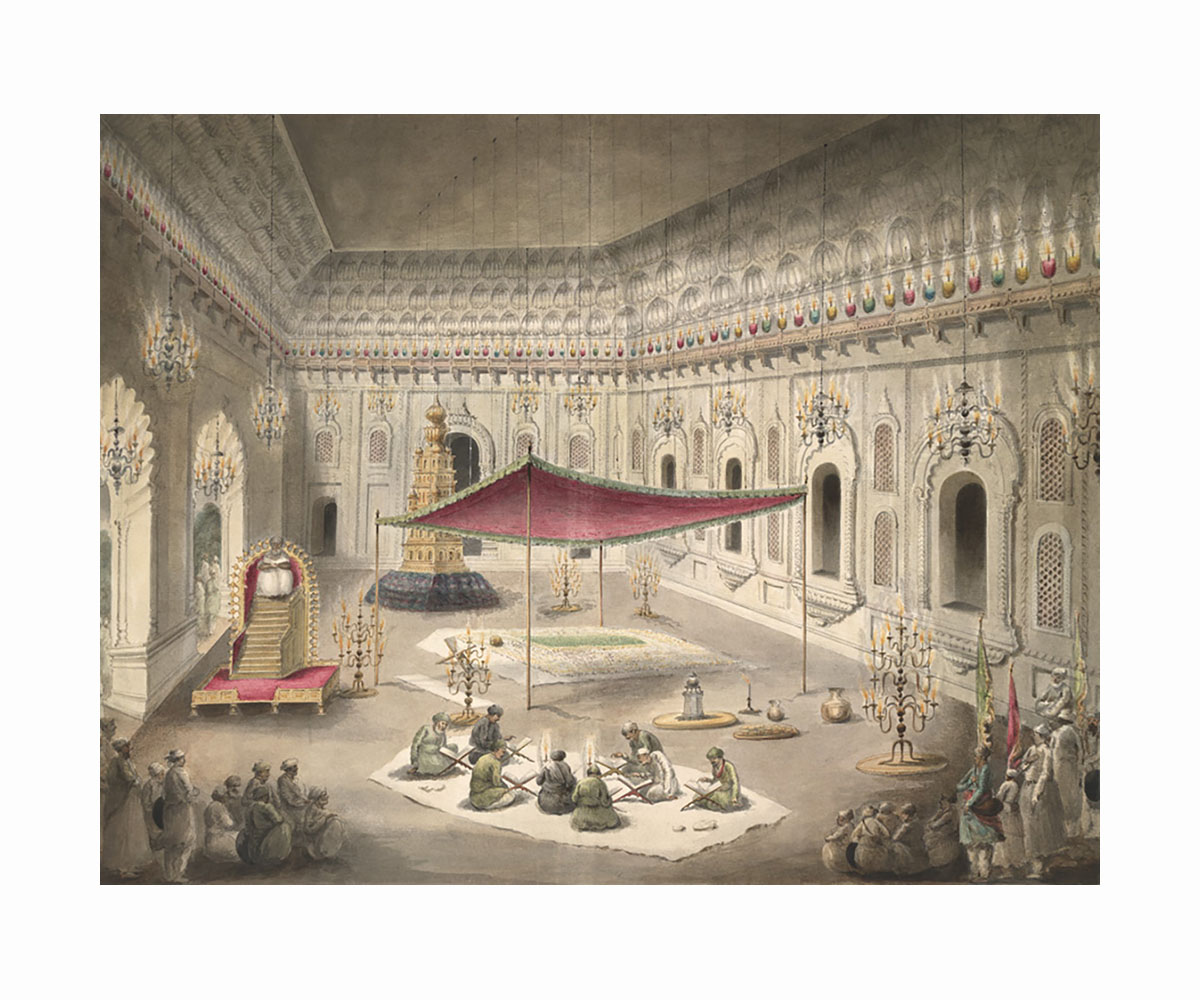
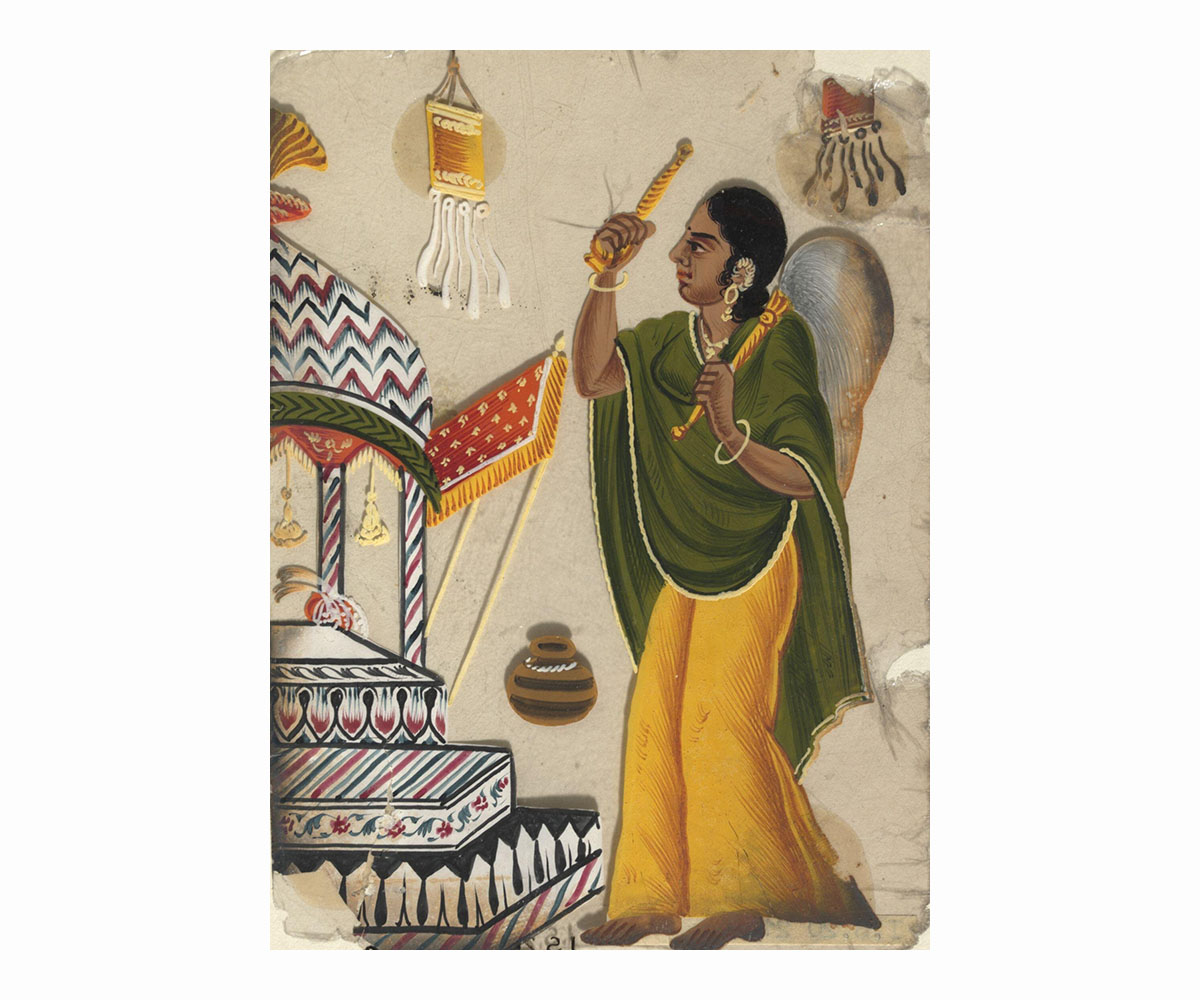
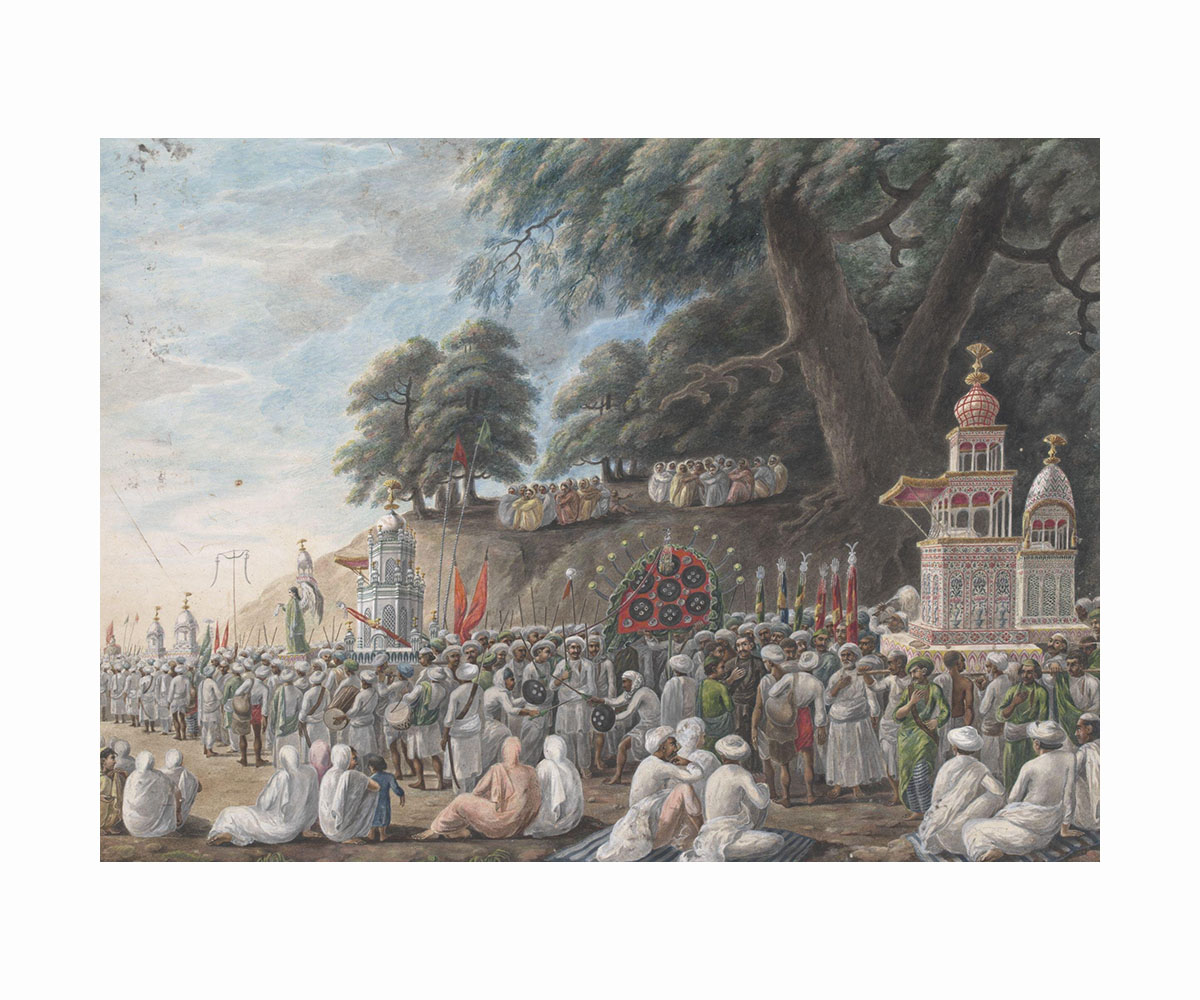
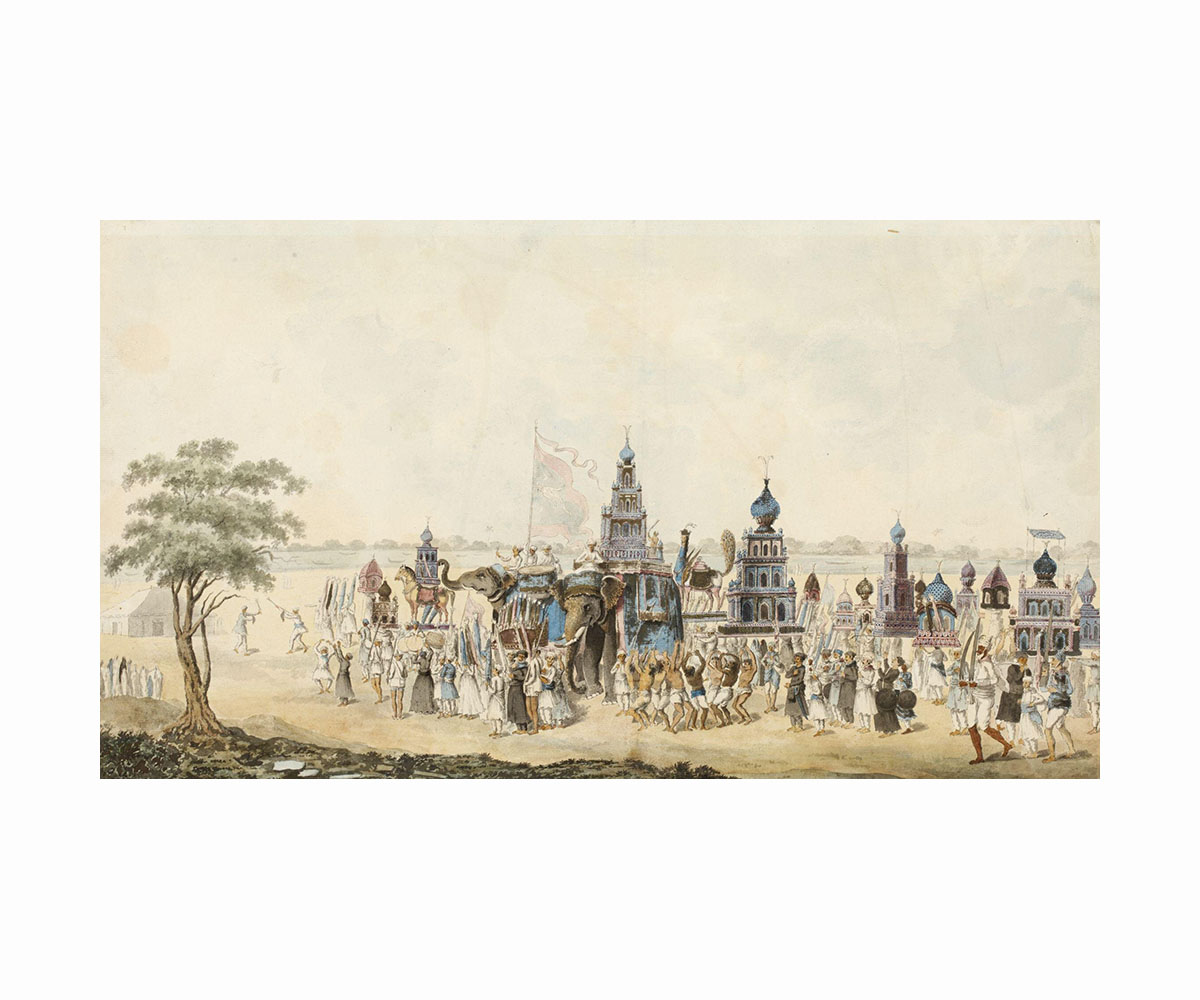

![The façade of the Maneckji Seth Agiary, a Zoroastrian fire temple, is a standout example of the popularity of the Persian Revival Style in Western India in the 19th and 20th centuries. This style was often seen in the architectural patronage of the Parsis, who emerged as one of the most influential mercantile communities of British India. Popular motifs of this style, like the mythical lamasus (winged bulls with human heads) and the faravahar (a winged guardian spirit in Zoroastrianism), drew on the historical art and architecture of the Achaemenid and Sasanian empires from sites like Persepolis, Bisotun, Taq-e Bostan, Naqsh-e Rostam and Naqsh-e Rajab in Persia.
The Parsi community’s adoption of this style occurred largely due to their networks of global commerce and politics, allowing them to access and translate research of ancient Persia into visible symbols that underlined their association with antiquity, imperial power, and art.
نمای آتشکدهی زرتشتی مانِکجی سِت نمونهی بارزی از رواج سبک «احیای [معماری] ایرانی» در غرب هند طی سدههای نوزدهم و بیستم است. این سبک غالباً در بناهایی دیده میشد که پارسیان، از بانفوذترین جوامع بازرگان در هند بریتانیا، بانیشان بودند. نقشمایههای محبوب این سبک، مانند گاو بالدار اساطیری (لاماسو) و فَروَهَر (روح بالدار نگهبان در دین زرتشت)، برگرفته از هنر و معماری شاهنشاهی هخامنشی و ساسانی، در جاهایی چون تخت جمشید و بیستون و طاق بستان و نقش رستم و نقش رجب، بود.
اقتباس جامعهی پارسیان از این سبک بسیار مرهون روابط گستردهی تجاری و سیاسی آنها بود که دسترس به پژوهشها دربارهی ایران باستان و برگردانیدن آنها به نمادهای بصری را ممکن میکرد و بر پیوند پارسیان با دوران باستان و قدرت شاهنشاهی و هنر تأکید میکرد.](https://mapacademy.io/wp-content/plugins/instagram-feed/img/placeholder.png)
